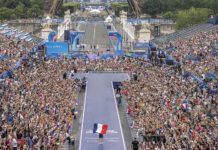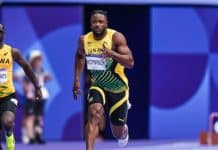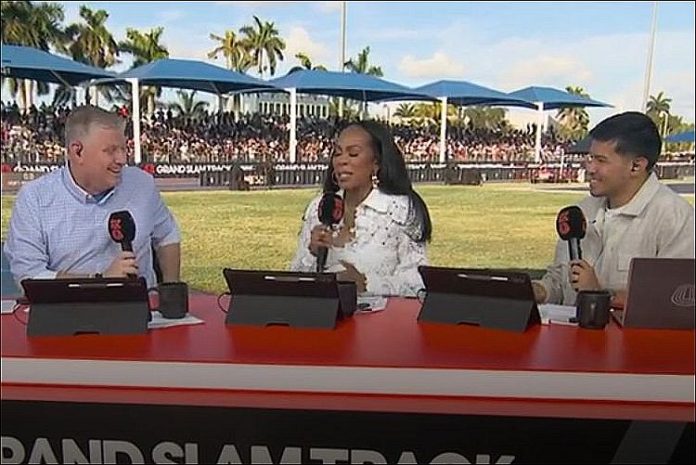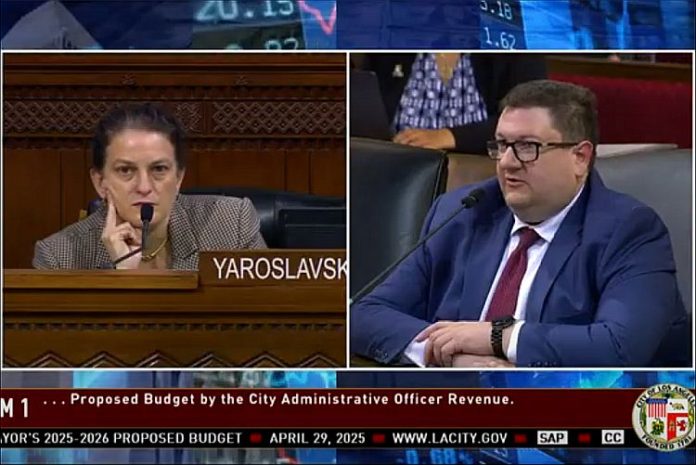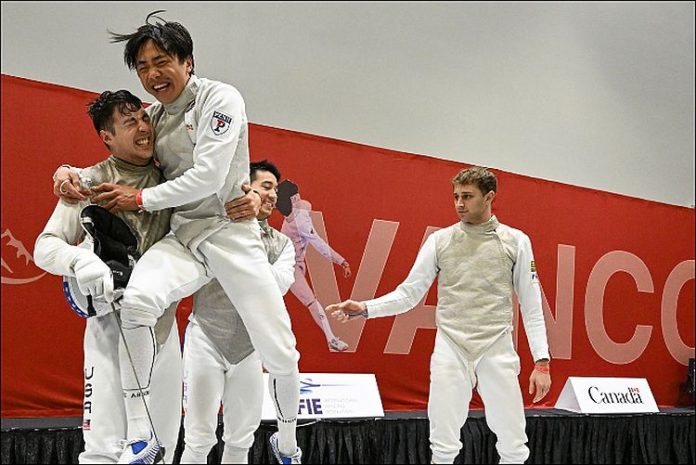★ The Sports Examiner: Chronicling the key competitive, economic and political forces shaping elite sport and the Olympic Movement.★
★ To get the daily Sports Examiner Recap by e-mail: sign up here! ★
≡ GRAND SLAM TRACK II ≡
The debut season of Olympic icon Michael Johnson’s Grand Slam Track is at the halfway mark, with meets in Kingston (JAM) and Miramar, Florida and excellent performances at both.
There were nine world-leading performances in Kingston and six more in Miramar, with Grand Slam Track marks accounting for eight current world leaders:
● Men/200 m: 19.84, Kenny Bednarek (USA)
● Men/400 m: 43.98, Jacory Patterson (USA)
● Men/800 m: 1:43.69, Marco Arop (CAN)
● Women/400 m: 48.67, Salwa Eid Naser (BRN)
● Women/3,000 m: 8:22.72, Hirut Meshesha (ETH)
● Women/5,000 m: 14:25.80, Agnes Ngetich (KEN)
● Women/100 m hurdles: 12.17, Masai Russell (USA)
● Women/400 m hurdles: 52.07, Sydney McLaughlin-Levrone
Grand Slam Track performances also account for the no. 2 marks in the men’s 110 and 400 m hurdles and the women’s 200 m, plus the fastest all-conditions 100 m with American Melissa Jefferson-Wooden’s 10.75 (+2.4) in Miramar.
So the competition has been great. Unlike in recent seasons, American stars like Bednarek, Grant Fisher, Gabby Thomas, McLaughlin-Levrone and more are racing twice in a weekend and once a month right through their training blocks and producing interesting, quality performances when they would normally not be seen or all, or might only drop in for one of the early Diamond League meets.
That’s good.
And it hasn’t been easy, especially for Director of Athletes and Racing Kyle Merber, who was working overtime in Miramar. The circuit is designed to have 48 seasonally-contracted “Racers” and 48 invited “Challengers” in each meet. But due to injuries and other issues, the Miramar meet – by my count – had only 42 “Racers” and 54 “Challengers.” That included having to replace U.S. star Fred Kerley, who was arrested on Thursday, with fellow American Brandon Hicklin in the men’s short sprints, on very short notice.
The circuit is being promoted hard on social media, although there is also a modest Web presence, and there has been interest. As of 5 May 2025, the follower counts show:
● 118,000+ on Instagram
● 39,000+ on Facebook
● 24,800 on TikTok
● 16,000+ on YouTube
● 15,540 on X
As Nielsen no longer makes its television audience measurements public, there’s no data on viewership on The CW, or on the NBC streaming service Peacock.
Attendance has been modest. Although no official figures have been given, crowds looked to range between 4-10,000 in the 35,000-capacity National Stadium in Kingston and the stands at the 5,000-capacity Ansin Sports Complex in Miramar appeared to have 3-4,000 each day over the 2-4 May weekend.
But the fans have been noisy, which the athletes have enjoyed and commended.
As a commercial entity, the question of whether the response to the circuit is doing well or poorly is really between Johnson and his investors, and the various broadcasters carrying the meets to 189 countries. Those discussions will happen after the schedule concludes on 27-29 June at UCLA’s Drake Stadium in Los Angeles.
But there was significant improvement in the “show” from Kingston to Miramar:
● Johnson promised that athletes could wear their own uniforms and would not have to worry about “bibs” – the numbers or names – worn on the front for identification. Kingston showed that if an athlete didn’t have a bib, no one knew who they were. This improved for Miramar and the bibs stayed on and everyone had one. Good.
● The broadcast concept got better as expected with more experience. Former ESPN anchor John Anderson and Olympic champion Sanya Richards-Ross were equal parts hosts and promoters of the league – that’s their job – and Citius Magazine founder Chris Chavez was much more engaged in Miramar than Olympic 1,500 m gold medalist Matthew Centrowitz was in Kingston.
Coordination between the host desk and the race calls with Steve Cram (GBR), Anson Henry (CAN) and American Carrie Tollefson needs to improve, and as Grant Slam Track has a relationship with StatsPeform, it’s a surprise that betting information is not more prevalent.
It’s also a little strange that as the circuit loves fan support that the host position is away from the spectators, in contrast to ESPN and FOX college football programming which has the fans close (but not too close to upset the show).
● With the exception of the always dressed-to-impress Richards-Ross, the rest of the broadcast crew is ultra-casual, giving the meets an ultra-informal air that belies the quality of the competitors and the stakes they are running for.
Is Grand Slam Track important enough to dress up its announcers in a way which demonstrates its importance?
● The very slow results posting from the Kingston meet on the GST Web site was dramatically improved for Miramar, although it’s still hard to read on the Web site with small white numerals and letters against the black background. Expect this to better still in Philadelphia at the end of May.
The television graphics have the same issues and the split times are inconsistently shown, but can also be improved with more experience. The overhead replay shots, however, especially for the lane races, show acceleration beautifully, and are great!
● Although some on social media complain about the time between races, this is also a benefit when there are technical problems like the speaker feedback from the (electronic) starting gun in Miramar. The issue was solved without any panic over running out of time at the end of the telecast.
One very good element of the Kingston and Miramar events, and expected to continue for Philadelphia, was keeping the show times the same for each day: 5-8 p.m. Eastern time on Friday and Saturday and 3-6 p.m. Eastern on Sunday.
That would mean show times for Los Angeles from 2-5 p.m. Pacific on Friday and Saturday and 12-3 p.m. Pacific on Sunday, which will affect the crowd. But it’s much better for meets at UCLA’s Drake Stadium, which has lighting designed for football on the infield and not for the track.
Johnson’s goal was to present compelling track & field to primarily American audiences in a compact schedule, showcasing as many of the brightest stars that he could get, who are being paid significant money, especially for meets in North America. For a first-year project, there was the needed improvement in the “show” from the first to second meet, and an expectation that Philadelphia will be better yet.
But a crowd of even 10,000 each day will look fairly lost in 52,593-seat Franklin Field, so the promotional effort will have to be in high gear throughout the rest of the month.
Rich Perelman
Editor
★ Receive our exclusive, weekday TSX Recap by e-mail by clicking here.
★ Sign up a friend to receive the TSX Recap by clicking here.
★ Please consider a donation here to keep this site going.
For our updated, 694-event International Sports Calendar for 2025 and beyond, by date and by sport, click here!






